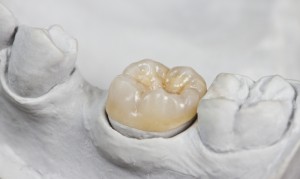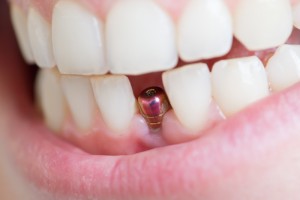What Is the Purpose of a Dental Crown?
If you have a cavity and are told you will need a crown, you may wonder what a “crown” is. It’s a type of cap that will go over a badly damaged tooth in order to reinforce it and make it whole. Dental crowns are only needed when decay has become exceptionally large but does not require a tooth to be taken out completely. When it comes to cavities, dental crowns can improve your smile after decay has happened!
Tooth Decay Progression
Cavities can happen any time, even if you take really good care of your health. A cavity is another name for “tooth decay”, which is literally the decay of your teeth. Many people can’t see that decay happening, as it tends to happen in the parts of your teeth that aren’t visible. You have 3 layers of teeth. They are the outer, hard layer called the tooth enamel, the next layer of more porous dentin and the center tooth pulp, where nerves and blood vessels lie.
Depending on what you eat and drink, your teeth will lose minerals that will make them weaker. When you eat or drink foods with calcium, phosphorous and other minerals, your teeth take some of those minerals, becoming stronger. When you drink citrus drinks (with citric acid), carbonation (with carbonic acid), alcohol, or foods and drinks that are sugary, you can erode your teeth. That strips away minerals, weakening them.
When you eat, sugars in your foods and drinks will mix with mouth bacteria. That creates a sticky film called plaque, that is clear and sticks to your tooth surfaces. It is also acidic, so it will start to erode your teeth and break up minerals. Sugar acts just like acids do. When you don’t brush and floss your teeth, that plaque can slowly weaken and decay the teeth, causing surface cavities. If that decay continues (because decay tends to spread), it can reach the dentin layer and make its way to your tooth center. There it will start to infect your tooth and you could lose it.
Progressed Decay and Dental Options
Studies show that only about 65% of adults are visiting the dentist each year, and many of them aren’t going the recommended twice-a-year. That means that tooth decay may be present and growing at a steady rate. When you don’t go to dental visits, you can have decay that has reached all your tooth layers. At that point, you only have a few options to save a tooth. You can get a root canal, which is a dental procedure that clears out your entire tooth, including the tooth roots. That is a more intense procedure that is hard on the tooth. Or, you can have your tooth removed and receive a replacement. With both of these options, you will need a dental crown.
Dental Crowns: What Are They?
Dental crowns are dental options offered for patients who have badly-damaged teeth that need more protection and reinforcement than a dental filling can provide. We want our patients to keep the most of their natural tooth that is possible instead of resorting to a tooth extraction. That is where dental crowns come in. They are custom-made tooth crowns that rest over a tooth that has been badly damaged by decay. In many cases where the tooth root (anchored to the jawbone) isn’t in jeopardy, we can clean out all decay and cover a tooth with a dental crown.
Teeth that have been treated with dental implants (a new custom tooth) or root canals are most commonly the recipients of a dental crown. We also provide these crowns to:
- Reinforce a tooth that has extensive decay or that is at risk of breaking apart because of that decay.
- Anchor a dental bridge to replace a missing tooth.
- Restore a worn, misshapen or discolored tooth.
- Complete a dental implant project when the post has been installed.
- Hold a tooth together when a very large cavity would require a dental filling to replace most of the structure of the tooth.
- Improve self-confidence when the teeth appear worn, damaged or unhealthy.
What Is the Process Like?
A dental crown is a great way to still keep some of your natural tooth while protecting it from everyday wear and tear. Getting a dental crown is also easier on your mouth than an entire new tooth would be, as a new tooth would need to anchor into your jawbone. A dental crown would just go over the remaining part of your tooth, which causing much less trauma to your mouth. Dental crowns are made of stainless steel or porcelain and resemble a natural-looking tooth.
For patients needing a crown, we remove decay and provide a root canal when needed. When decay is large, it may take most of the tooth above your gum line. However, we will keep as much natural tooth that is not decayed. At your first appointment, we remove decay and provide a temporary crown. We will map out images of your mouth to design a custom-made crown to fit the shape and look of your teeth.
At your second appointment, we will bond a dental crown above your natural tooth and fill the spaces between with very strong material to keep it in place. The process if fairly simple, and you can have a crown for 5-15 years or more depending on how well you take care of your teeth. For patients that are short on time, we have a same-day crown option that can provide you with your permanent crown the same day. This is done using a high-tech machine that can make the crown during your appointment. For any signs of tooth decay, toothaches and more, call Dr. Evanson’s office at (720) 409-0008 to see what your dental options are!
Leave a reply →








